Discover the Serenity of Mount Qingcheng Taoist Temples: A Spiritual Journey
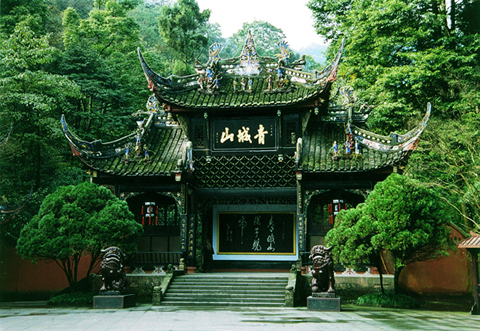
An Essential Guide to Visiting Mount Qingcheng Taoist Temples
Nestled in the heart of Sichuan province, Mount Qingcheng offers more than just breathtaking views; it is a sanctuary of ancient Taoist temples steeped in spirituality and natural beauty. Designated as a UNESCO World Heritage Site, this majestic mountain is recognized as one of the birthplaces of Taoism and invites travelers to explore its winding trails that weave through lush forests and serene landscapes.
As you embark on your journey, prepare to be enchanted by the tranquil ambiance that permeates the air, often infused with the fragrant smoke of joss sticks from the temples scattered along the pathways. Whether you’re a seasoned hiker seeking the thrill of summiting its peaks or a curious traveler eager to immerse yourself in Taoist culture, Mount Qingcheng caters to all.
Experience the harmonious blend of nature and spirituality as you wander through centuries-old structures, each telling stories of devotion and wisdom. From the challenging climbs that reward you with panoramic vistas to the serene moments spent sipping tea with local monks, every step on this sacred mountain is an invitation to reflect and rejuvenate.
Join us as we delve into the essential guide for visiting the Mount Qingcheng Taoist Temples, where adventure and tranquility await at every turn.
In This Guide
- An Essential Guide to Visiting Mount Qingcheng Taoist Temples
- The Rich History and Legends of Mount Qingcheng Taoist Temples
- Main Highlights: What You Absolutely Can’t Miss
- Planning Your Visit: A Practical Guide
- Tickets: Prices, Booking, and Tips
- How to Get There: A Complete Transportation Guide
- Local Cuisine and Accommodation Nearby
- Frequently Asked Questions
- Final Thoughts on Your Trip
The Rich History and Legends of Mount Qingcheng Taoist Temples
Nestled in the verdant embrace of Sichuan province, Mount Qingcheng has long been venerated as one of the birthplaces of Taoism, a spiritual tradition that emphasizes harmony with nature. The mountain is not just a stunning natural landscape; it is also steeped in rich history and legends that have captivated visitors for centuries.
Origins of Taoism
Mount Qingcheng’s significance in Taoism dates back to the 2nd century AD, when the famous Taoist philosopher Zhang Daoling is said to have founded the Way of the Heavenly Masters (Tianshi Dao) here. Legend has it that Zhang, seeking a place of solitude for meditation and communion with nature, chose this mountain for its tranquil beauty and profound spiritual energy. The area soon became a center of Taoist thought and practice, attracting followers who sought enlightenment and a deeper understanding of the universe.
Architectural Marvels
Over the centuries, the mountain has been adorned with numerous temples and monasteries, each echoing the architectural styles of their respective eras. The prominent Shangqing Temple, built during the Tang Dynasty (618-907 AD), is a prime example of the exquisite craftsmanship of the time. Its intricate carvings and serene surroundings invite contemplation and prayer, embodying the essence of Taoism as a path to harmony with the cosmos.
As you wander through the temple complex, you may notice the beautiful integration of nature and architecture. The buildings are constructed with an eye towards their natural surroundings, harmonizing with the lush forests and tranquil streams that pepper the landscape. This design philosophy reflects the Taoist principle of living in balance with nature, a core tenet of the faith.
Legends and Mysticism
The legends surrounding Mount Qingcheng add an enchanting layer to its historical significance. One popular tale speaks of a mystical fox spirit that resides in the area, believed to guide lost souls and protect travelers. Many visitors claim to feel her presence, especially in the quiet moments spent in meditation among the ancient trees.
Another popular belief is that the mountain holds the secrets of immortality, as taught by the legendary Taoist sage Li Tieguai. Pilgrims and curious travelers alike have journeyed here in search of wisdom, healing, and perhaps even a taste of the elusive elixir of life.
A UNESCO World Heritage Site
In recognition of its cultural and historical importance, Mount Qingcheng was designated a UNESCO World Heritage Site in 2000, alongside the Dujiangyan Irrigation System. This honor has helped to preserve the area, ensuring that both the natural beauty and the rich cultural tapestry of the Taoist temples remain intact for future generations to enjoy.
Conclusion
Visiting Mount Qingcheng is not just a day trip; it is an immersion into the heart of Taoist philosophy and spirituality. The serene temples, surrounded by misty peaks and ancient trees, invite you to slow down and reflect. As you walk the winding paths and breathe in the crisp mountain air, you may find yourself drawn into the legends and history that have shaped this sacred place, leaving you with a sense of peace and connection to the timeless traditions of Taoism.
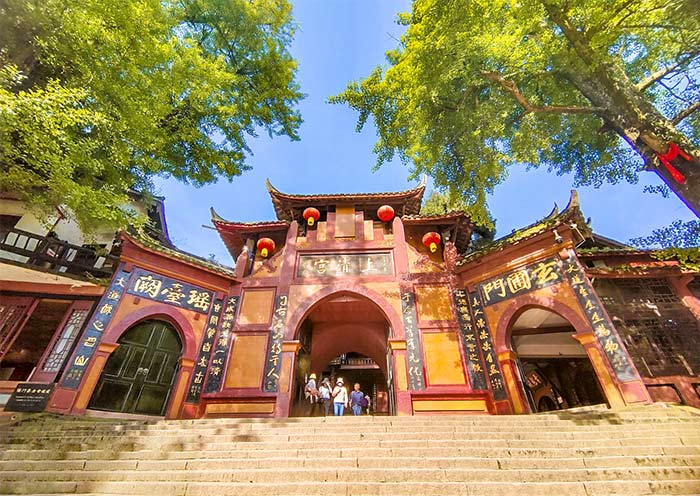
Mount Qingcheng Taoist Temples.
Main Highlights: What You Absolutely Can’t Miss
Mount Qingcheng, an enchanting tapestry of natural beauty and Taoist spirituality, is a must-visit destination for international travelers. Nestled in the lush landscapes of Sichuan province, this UNESCO World Heritage Site is famously known as one of the birthplaces of Taoism. Here’s a guide to the main highlights that you absolutely cannot miss during your visit.
Breathtaking Hiking Trails
The trails of Mount Qingcheng invite adventurers and nature lovers alike. With approximately 10,000 steps leading to the highest peak, prepare for a rewarding yet challenging hike. The final stretch is particularly steep, but the panoramic views at the summit, complemented by the serene ambiance of a scenic temple, make every step worthwhile. As you ascend, the fresh mountain air and the rustle of leaves create a tranquil backdrop.
Ancient Temples
Scattered throughout the mountain are several ancient Taoist temples, each steeped in history and spirituality. Jianfu Temple, one of the most famous, showcases stunning architecture and offers a glimpse into the rich traditions of Taoism. As you explore these sacred spaces, take a moment to absorb the atmosphere filled with the aroma of joss sticks and the gentle chanting of monks, providing a truly immersive experience.
Scenic Beauty
The natural scenery surrounding Mount Qingcheng is nothing short of spectacular. Expect to be mesmerized by mist-shrouded peaks, emerald forests, and peaceful streams. The picturesque landscapes are perfect for photography, making every angle an Instagram-worthy shot. Early mornings or late afternoons are particularly enchanting, as the light dances through the mist, creating a mystical ambiance.
Cultural Experiences
Engage with local culture by participating in a tea ceremony with monks or exploring the Taoist philosophy that permeates the area. These experiences not only enrich your understanding of this ancient belief system but also provide a deeper connection to the serene environment that Mount Qingcheng offers.
Practical Considerations
While the journey is rewarding, be prepared for additional costs that enhance your visit. An entry fee of 80 RMB grants you access to the area, while minibuses and cable cars are available to navigate the terrain more easily. Expect to pay around 20 RMB for a minibus ride, 10 RMB for a boat ride, and 60 RMB for a cable car, all of which help streamline your adventure.
Nearby Attractions
Don’t miss the opportunity to visit the Dujiangyan Irrigation System, another UNESCO World Heritage Site located nearby. This remarkable engineering feat dates back over 2,000 years and showcases the ingenuity of ancient Chinese water management. Combining a trip to both sites offers a well-rounded experience of natural beauty and historical significance.
Best Times to Visit
To avoid the crowds, plan your visit on weekdays or early in the morning. The serene atmosphere of Mount Qingcheng is best enjoyed when you can stroll along the trails free from the hustle and bustle of larger tourist groups.
Embark on your journey to Mount Qingcheng and uncover the harmonious blend of nature, culture, and spirituality that awaits. Whether you seek adventure or tranquility, this sacred mountain offers an unforgettable experience that resonates long after your visit.
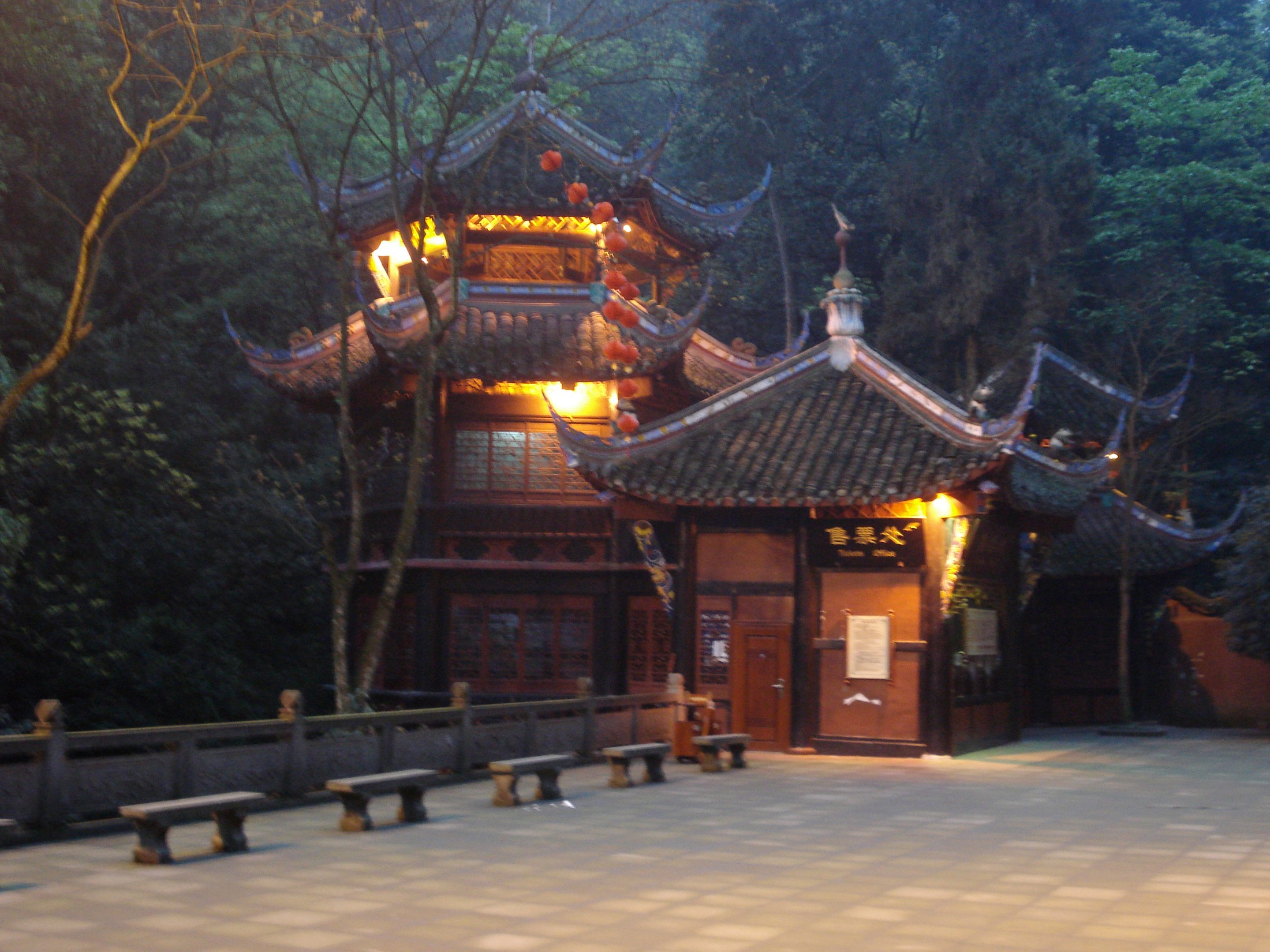
Mount Qingcheng Taoist Temples.
Planning Your Visit: A Practical Guide
Preparing for Your Adventure at Mount Qingcheng
Nestled in the lush landscapes of Sichuan province, Mount Qingcheng is not just a feast for the eyes but also a profound experience steeped in Taoist tradition. To ensure your visit is as enjoyable and fulfilling as possible, here is a practical guide to help you navigate this magnificent destination.
Getting There
Location: Mount Qingcheng is conveniently located about 68 kilometers (approximately 42 miles) from Chengdu, making it an accessible day trip.
Transportation Options:
– By Bus: Take a direct bus from Chengdu’s Xinnanmen Bus Station, which operates regularly. The journey takes about 1.5 to 2 hours.
– By Taxi or Ride-Hailing App: This is a more comfortable option if traveling in a group. Expect to pay around 200-300 RMB.
– Guided Tours: Various tours from Chengdu offer inclusive packages that often combine a visit to the Dujiangyan Irrigation System, making for an enriching experience.
Entry Fees and Costs
- Entrance Ticket: 80 RMB (approx. $12)
- Minibus to the River: 20 RMB (round trip)
- Boat Ride: 10 RMB (round trip)
- Cable Car: 60 RMB (one way)
Tip: Bring cash, as not all vendors may accept card payments. Prepare for extra costs if you opt for the minibus, boat ride, or cable car, which can significantly ease your journey.
Best Time to Visit
To enjoy the tranquility of the mountain and avoid large crowds, consider visiting on weekdays. Early mornings or later in the afternoon tend to be less busy, especially during peak tourist seasons (spring and autumn). The weather is typically mild, but be prepared for possible rain—an umbrella can be your best friend!
What to Expect
Mount Qingcheng offers more than just breathtaking views; it is a spiritual haven with ancient Taoist temples scattered throughout its scenic trails. Here’s what you can look forward to:
- Hiking: The trails vary in difficulty, with the main path to the summit being a challenging but rewarding 10,000-step hike. The last stretch can be steep, so wear sturdy shoes and bring plenty of water.
- Scenic Temples: Don’t miss the chance to explore the historic temples, such as the Shangqing Temple, which offer a glimpse into Taoist culture and stunning views of the surrounding mountains.
- Cultural Experiences: Engage with local monks, participate in tea-tasting sessions, or meditate in tranquil settings.
What to Bring
- Comfortable Hiking Gear: Breathable clothing and good hiking shoes are essential.
- Water and Snacks: Although there are small shops along the trails, having your own supply can be helpful.
- Camera: Capture the stunning landscapes and spiritual ambiance.
- Cash: For entrance fees and any additional costs along the way.
Nearby Attractions
While Mount Qingcheng is a destination in itself, consider extending your adventure to nearby attractions:
– Dujiangyan Irrigation System: A UNESCO World Heritage Site showcasing ancient engineering prowess.
– Panda Bases: For an additional fee, visit the Dujiangyan Panda Base to see China’s most famous residents.
Safety and Etiquette
- Stay on Designated Trails: To preserve the natural beauty and for your safety, stick to marked paths.
- Respect Local Customs: When visiting temples, dress modestly and observe silence where appropriate.
- Be Mindful of Nature: Carry out any trash and avoid disturbing wildlife.
Conclusion
Mount Qingcheng is a remarkable blend of natural beauty and cultural significance, making it a must-visit for anyone traveling to Chengdu. With careful planning and preparation, you can enjoy an unforgettable journey through this sacred Taoist landscape. Prepare to breathe in the fresh mountain air, soak up the serene atmosphere, and create memories that will last a lifetime!
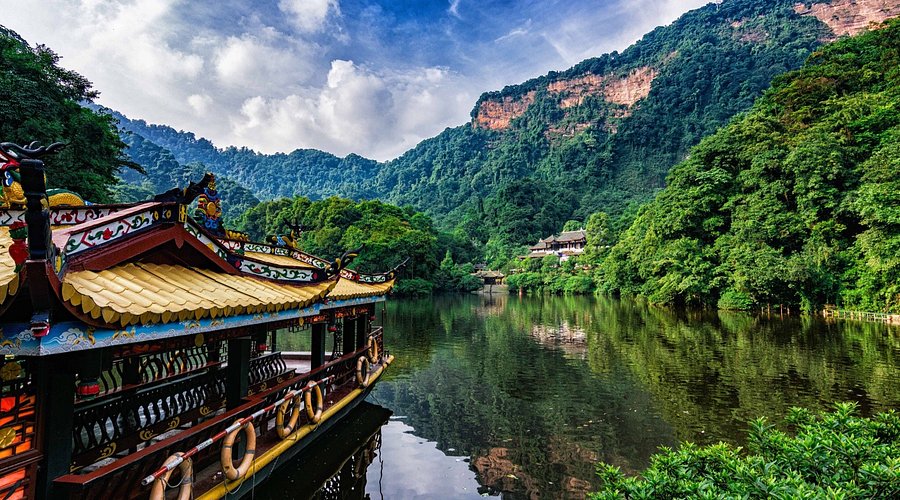
Mount Qingcheng Taoist Temples.
Tickets: Prices, Booking, and Tips
Visiting the Mount Qingcheng Taoist Temples is a rewarding experience for anyone seeking a blend of nature, spirituality, and adventure. Here’s what you need to know about tickets, pricing, and tips to make the most of your visit.
Ticket Prices
- Entry Fee: The standard entry ticket is 80 RMB.
- Minibus to the River: A round-trip ride will cost you 20 RMB. This service is particularly useful for those looking to save time and energy during their hike.
- Boat Ride: If you choose to take the scenic route across the river, a round-trip boat ride is available for 10 RMB.
- Cable Car: For a quick ascent, the cable car costs 60 RMB. This is a great option if you prefer to skip the more strenuous parts of the hike.
Booking Your Visit
You can purchase tickets at the entrance upon arrival; however, it is advisable to arrive early, especially on weekends or holidays, when crowds can swell. For a more streamlined experience, consider booking a guided tour that often includes entry fees and transportation services. Many tours offer packages combining visits to the nearby Dujiangyan Irrigation System, enhancing your day trip.
Tips for a Successful Visit
-
Plan Ahead: The best time to visit Mount Qingcheng is during the spring or autumn when the weather is mild and the scenery is breathtaking. Summer can be hot and humid, while winter may bring cold temperatures.
-
Dress Appropriately: Wear comfortable hiking shoes and dress in layers. The temperatures can vary significantly as you ascend the mountain.
-
Stay Hydrated: Bring plenty of water, especially if you plan to hike to the summit. The trek can be demanding, and staying hydrated is essential.
-
Be Prepared for Extra Costs: As outlined above, several additional fees may come into play depending on how you choose to navigate the area. Budget accordingly to avoid surprises.
-
Mind the Crowds: To experience Mount Qingcheng at its best, try to visit on weekdays or during off-peak hours. Early mornings are usually quieter, allowing you to enjoy the serene atmosphere of the temples.
-
Bring a Camera: The views and the temples are incredibly photogenic, so don’t forget your camera or smartphone to capture the memories.
-
Experience Local Culture: Take some time to interact with local monks or participate in a tea-tasting experience. This adds a unique cultural layer to your visit.
With these tips and information in mind, you’re set for an unforgettable visit to the Mount Qingcheng Taoist Temples! Enjoy the tranquility and beauty that this UNESCO World Heritage site has to offer.
How to Get There: A Complete Transportation Guide
Reaching Mount Qingcheng, a UNESCO World Heritage site and one of the most revered Taoist mountains in China, is a journey filled with stunning landscapes and cultural encounters. Whether you’re starting from Chengdu or nearby areas, there are various transportation options to make your trip smooth and enjoyable.
From Chengdu to Mount Qingcheng
- By Public Bus
- Bus Station: Head to the Chengdu Xinnanmen Bus Station.
- Bus Number: Take the bus to Dujiangyan, which operates frequently from early morning until late afternoon (approximately every 30 minutes).
- Journey Duration: The bus ride takes around 1-1.5 hours.
-
Final Stop: Get off at the Dujiangyan Scenic Area bus station. From here, follow the signs to the Mount Qingcheng entrance, which is about a 15-minute walk.
-
By Train
- Train Station: Take a train from Chengdu Railway Station to Dujiangyan Railway Station.
- Journey Duration: The train ride is roughly 30 minutes.
-
From Dujiangyan Railway Station: Take a taxi or local bus to the Mount Qingcheng entrance, which is about a 30-minute drive away.
-
By Taxi or Rideshare
- Direct Route: For convenience, you can opt for a taxi or rideshare service like Didi.
- Travel Time: The journey from downtown Chengdu to Mount Qingcheng takes about 1-1.5 hours, depending on traffic.
-
Cost: Expect to pay around 150-200 RMB for a one-way trip.
-
Guided Tours
- Day Tours: Many travel agencies offer full-day guided tours from Chengdu that include transportation, entrance fees, and sometimes meals.
- Advantages: These tours can provide a hassle-free experience, as everything is arranged for you, including local insights from guides.
Additional Tips
- Entry Fees: Be prepared for various costs, including an entry ticket (approximately 80 RMB), and optional extras such as a minibus ride to the river (20 RMB round trip) and a cable car (60 RMB) that can shorten your hike.
- Best Times to Visit: To avoid the crowds, consider visiting on weekdays or early in the morning. Weekends can get particularly busy as it is a popular spot for both locals and tourists.
- Weather Considerations: Always check the weather forecast before your visit, as conditions can change rapidly in the mountains. Dress in layers and wear sturdy shoes suitable for hiking.
With these transportation options and tips in mind, you are well on your way to experiencing the natural beauty and spiritual tranquility of Mount Qingcheng. Enjoy your adventure!
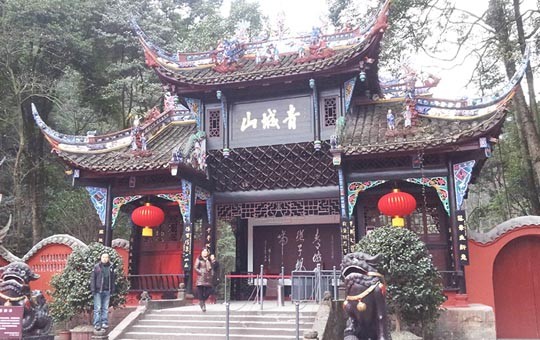
Mount Qingcheng Taoist Temples.
Local Cuisine and Accommodation Nearby
Exploring the Mount Qingcheng Taoist Temples is not just a journey into ancient spirituality and breathtaking natural beauty; it also opens up an opportunity to indulge in the local cuisine and find suitable accommodations nearby.
Culinary Delights
When you’ve hiked through the lush landscapes of Mount Qingcheng, you’ll want to refuel with some delectable local dishes. Here are a few recommendations:
-
Chen MaPo DouFu Restaurant
Located just 1.8 miles from the mountain, this eatery is a must-visit for those wanting to experience authentic Sichuan cuisine. Their signature Mapo Tofu is a burst of flavor, perfectly balancing spice and savoriness. -
Chen PoPo ZhenZang Cai
About 1.4 miles from the temples, this restaurant specializes in traditional Szechuan dishes. Enjoy a hearty meal that includes everything from spicy hot pots to aromatic stir-fries, all prepared with fresh local ingredients. -
Six Senses Qing Cheng Mountain Sala Thai Restaurant
For a slight twist away from traditional Chinese fare, this Thai restaurant, located 1.2 miles from the temples, offers a variety of healthy dishes in a serene setting. It’s an excellent choice for travelers looking for lighter, aromatic meals. -
Qi Lin Pang Ge Hotpot Shi Fu
If you’re feeling adventurous and craving a communal dining experience, head to this hotpot restaurant. Just 2 miles away, it provides a delightful way to enjoy a meal with friends or family, cooking fresh ingredients in bubbling broth right at your table.
Comfortable Stays
After a day of exploring, unwind in one of the nearby accommodations that cater to all types of travelers:
-
Six Senses Qing Cheng Mountain
A luxurious option within 1.2 miles of the temples, this resort offers beautifully designed rooms with modern amenities. Guests can enjoy the serene surroundings, a world-class spa, and a restaurant that serves local and international cuisine. -
Qingcheng Mountain Hotel
Perfect for budget-conscious travelers, this hotel provides comfortable rooms and is located within a short distance from the mountain trails. It’s an ideal base for those wanting to explore the area without breaking the bank. -
Sichuan Wenjun International Hotel
Situated approximately 5 miles from the temples, this hotel offers a blend of comfort and convenience. With spacious rooms and a restaurant serving local dishes, it’s a great choice for families and groups. -
Mount Qingcheng Scenic Area Guesthouse
For a more rustic experience, consider staying at this guesthouse located near the base of the mountain. It offers a cozy atmosphere and local hospitality, making it a perfect spot to relax after a day of hiking.
Whether you’re savoring local flavors or resting in comfortable accommodations, the area surrounding Mount Qingcheng offers a delightful blend of culinary and lodging experiences that will enhance your visit to this UNESCO World Heritage site.

Mount Qingcheng Taoist Temples.
Frequently Asked Questions
Frequently Asked Questions about Mount Qingcheng Taoist Temples
-
What are the opening hours for Mount Qingcheng?
Mount Qingcheng is open daily from 8:00 AM to 5:00 PM. It’s best to arrive early to enjoy a peaceful hike before the crowds gather. -
How do I get to Mount Qingcheng from Chengdu?
The most convenient way to reach Mount Qingcheng from Chengdu is by taking a bus or booking a private tour. Buses frequently depart from Chengdu’s Ximen Bus Station, and the journey typically takes around 1.5 to 2 hours. -
What is the entry fee for Mount Qingcheng?
The entry fee is 80 RMB (approximately $12). Please note that additional costs may apply for transportation options within the park, such as the minibus, boat rides, or cable cars. -
Are there any guided tours available?
Yes, there are various guided tours available that include transportation, meals, and a knowledgeable guide. Options range from half-day excursions to full-day trips combining visits to both Mount Qingcheng and the Dujiangyan Irrigation System. -
What should I wear while hiking at Mount Qingcheng?
Comfortable, breathable clothing and sturdy hiking shoes are recommended. Since the terrain can be steep and uneven, proper footwear is essential for safety and comfort. -
Is the hike suitable for beginners?
The hike can be challenging, especially in the final ascent to the summit. While some paths are manageable for beginners, it’s advisable to be in good physical condition and prepared for a strenuous climb. -
What amenities are available at Mount Qingcheng?
The area offers basic amenities including restrooms and refreshment stalls. You can also find tea houses near temples where you can relax and enjoy local tea with the serene mountain backdrop. -
Can I bring food and drinks into the park?
Yes, you can bring your own food and drinks to enjoy during your hike. However, there are also food stalls and restaurants within the park if you prefer to purchase meals on-site.
Final Thoughts on Your Trip
As you conclude your journey through the serene landscapes and ancient temples of Mount Qingcheng, take a moment to reflect on the harmonious blend of nature and spirituality that defines this sacred mountain. The winding trails, lush forests, and tranquil atmosphere create an enchanting backdrop for introspection and adventure alike. Each step brings you closer to not just the physical summit but also a deeper connection to the traditions of Taoism that have flourished here for centuries.
Whether you chose to hike to the peak and bask in the breathtaking views, or simply meander through the peaceful temple grounds, Mount Qingcheng offers a unique experience that resonates with travelers from all walks of life. Remember to embrace the tranquility of this UNESCO World Heritage site, savor a cup of local tea, and perhaps even share a moment with the resident monks.
Your visit to Mount Qingcheng is not just a trip; it’s an invitation to nourish your spirit amidst the beauty of nature. As you depart, carry the essence of this sacred place with you, allowing it to inspire your journey ahead. Safe travels! 🌿✨